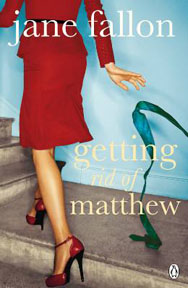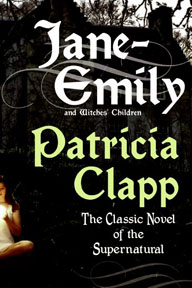Getting Rid of Matthew In this light and charming debut novel by Jane Fallon, Getting Rid of Matthew updates the "careful what you wish for" caution with grace and gentle humor. Helen's been treading water for a long time now: four years with her much-older married lover (formerly her boss) and several more than that as an administrative assistant in the same public relations firm. She's resigned to seeing Matthew a few nights a week, and only when it's convenient for him. She's resigned to doing PR drudge work like setting meetings. But things are getting old.She's getting old. During an especially intense argument, Helen challenges Matthew to leave his wife Sophie, and is stunned to find Matthew and his belongings on her doorstep shortly thereafter. Too late, she realizes that maybe she didn't mean it. She should be thrilled: she and Matthew can bring their relationship out into the open, she'll have his undivided attention, they'll be together all the time. They'll be together all the time. Suddenly, Helen's thinking that maybe this relationship isn't such a good idea. Things get sticky at the office. Once word is out that Matthew's left his wife for a colleague at the office, tongues wag and Helen's silence allows another woman to take the fall, along with all of the mean-spirited ridicule that accompanies it. Helen's soon paralyzed-- she can't go forward but she can't go back. Or can she? It dawns on Helen: Matthew's made a huge sacrifice to be with her. He's not leaving unless he's got a really good reason; she's got to make the grass look greener on the other side. Of anywhere. Besides, she does feel genuine remorse about the breakup of Matthew's marriage. Clever planning allows Helen to orchestrate a "chance" meeting with his estranged wife. The pair genuinely hit it off, and Helen is suddenly privy to hearing all about "the other woman" from Sophie's point of view. Emotionally wrought, Helen does everything in her power to maneuver reconciliation between This carefully plotted novel explores complex modern relationships from both angles-- the wife and the mistress. Helen's not an entirely sympathetic character but she's well aware of her faults. It's admirable that Helen wants to set things right, but her lack of will-- at home and in the office-- gets a little old before the book is completed. Still, somehow Fallon manages to keep Helen on the reader's good side. While Helen's motives may be suspect, her intentions are pretty good, and that goes a long way toward keeping the reader interested. UK television producer Jane Fallon's novel is full of light dialogue and keen observations about marriage, relationships, and honest self-evaluation. With a satisfying if anticlimactic ending, it's nice to see that perhaps Helen got what she wished for after all, even if she didn't even realize what it was. ---
I'm an avid reader of spooky tales, have been since I was a young child, and I recently stumbled across the 2007 re-issue of Patricia Clapp's Jane-Emily and Witches' Children, paired in a single paperback volume. The cover blurb claimed Jane-Emily is a classic novel of the Originally published in 1969, the gothic Jane-Emily opens with eighteen-year-old Louisa accompanying her young, newly-orphaned niece Jane to a summer visit to her paternal grandmother's home. Jane is quite happy to take Emily's room, her aunt having died many years ago at age 12. Emily's old dolls and toys are Jane's for the enjoyment. Louisa finds she enjoys the company of Adam, a family friend and childhood playmate of Emily's, and the pair settle down for a pleasant summer. And then strange occurrences begin: Jane swears she sees the reflecting ball in the 1982's Witches' Children is a captivating retelling of the Salem witch trials. Mary Warren has little to vary her routine; she has been taken in by the Proctor family after her parents' death several years ago, cooking, cleaning, and minding the children as needed for Goody Proctor. But it is Master Proctor whom Mary secretly fantasizes about. Despite the long interval between first publication and this printing, both stories hold up extraordinarily well, the key elements of horror and the supernatural just as striking today as they must have been for readers twenty and more years ago. The first person narrative Patricia Clapp uses in both stories brings the immediacy and urgency of the dangers each heroine faces to the forefront. Fast-moving plots twist and turn as Clapp's subtle commentary--in Jane-Emily about the importance of limits and discipline for children, in Witches' Children about the power of words and groupthink, mass hysteria and independence-- adds depth and staying power to each tale. Well-worth the reprint, Patricia Clapp's Jane-Emily and Witches' Children is a valuable revisiting of two scary stories all but guaranteed to keep you up at night. Amy Brozio-Andrews (http://www.amyba.com)
is a freelance writer and book reviewer. |





 Jane-Emily and Witches' Children
Jane-Emily and Witches' Children



